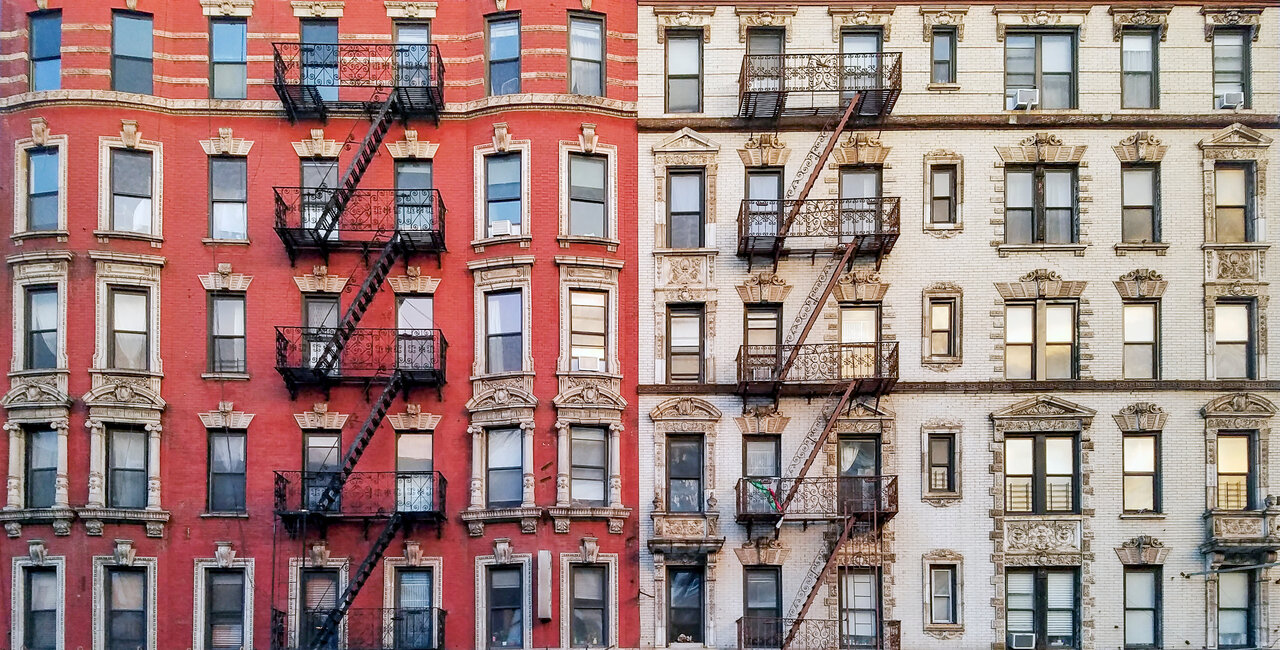By Vianna Mabanag on April 2, 2024 in Events
Opening windows in winter to vent excess heat is a widespread practice in New York City, where residents may experience indoor temperatures over 80°F in buildings with outdated heating systems. Often, certain units are consistently overheated and others underheated, perturbing residents on both extremes. This complaint is most common in properties built before 1940, many which still rely on steam heating.

In a city where some of the world’s oldest skyscrapers are still in use today, New York City’s inefficient buildings can cause issues beyond the discomfort of urban dwellers. Outdated heating and cooling systems, lighting, appliances and windows are energy-wasters, putting pressure on energy systems to operate at a higher cost and capacity, consuming emissions-intensive fossil fuels.
Carbon inventory reports show that building energy consumption contributes more to New York City’s total emissions than any other source, including cars, trucks, buses and trains. As a result, heat and energy usage in buildings have come under scrutiny by the city, which has committed to reducing greenhouse gas (GHG) emissions by 80% by 2050.
Introducing Local Law 97, New York City’s building decarbonization initiative
One of the most ambitious plans for reducing emissions in the U.S., Local Law 97 (LL-97) places limits on carbon emissions associated with properties over 25,000 square feet. Passed in 2019 and coming into effect this year, LL-97 has sent ripples throughout the real estate industry.
The law requires buildings in New York City to report on carbon emissions over a series of five-year compliance periods, the first of which is 2024-2029. Every five years, the allowable emissions thresholds are set to decrease.
Emissions caps are set by property type, reflecting the usage trends and energy profiles of different building categories. The requirement applies to over 60 property categories, including multifamily housing, under the definitions used in ENERGY STAR Portfolio Manager. In addition, LL-97 includes provisions for affordable and income restricted housing providers.
Exceeding the annual emissions cap can result in significant fines, with a penalty that increases by $268 per metric ton of CO2 equivalent emissions over the limit.For a 750,000 square-foot primarily residential property, exceeding the cap by 50% would incur a penalty of nearly $678,000 annually, amounting to a tax of approximately $0.90 per square foot.
In 2022, Local Law 97 was challenged in court, with the plaintiffs alleging that, among other complaints, the penalties for exceeding the annual GHG limits are excessive, unreasonable, will deprive them of their due process rights and amount to an unauthorized tax. In fall of 2023 a New York Supreme Court judge dismissed the lawsuit, giving property owners notice to begin planning for the compliance period starting on January 1, 2024.
The final rules, adopted at the end of last year, provide building owners with additional time to avoid penalties if they demonstrate “good faith effort” to decarbonize. This exception allows property owners to delay penalties by meeting a set of requirements, which include taking steps toward quantifying emissions, benchmarking energy usage, upgrading lighting and submitting a decarbonization plan.
What building owners and managers should know
One of the most immediate needs for building owners and managers is attaining full, auditable data coverage for required disclosures. Local Law 97 requires whole-building energy and water data, with incomplete or inaccurate reports potentially carrying penalties. To avoid fines, building owners and managers are taking steps to confirm the accuracy and completeness of property data in ENERGY STAR Portfolio Manager.
Roughly 11% of properties covered by Local Law 97 exceed emission caps for the 2024-2029 compliance period. The next compliance period, beginning in 2030, will necessitate investments totaling $12-15 billion across 15,000 buildings. The city’s analysis anticipates technical and financial assistance from various city, state and federal sources, including Inflation Reduction Act tax credits.
Several programs offer technical and financial assistance for market rate and affordable housing providers in New York. Owners may apply for financing arrangements with NY Green Bank and NYSERDA to fund a variety of decarbonization projects. Incentives are also available to install heat pumps and grid-connected electric photovoltaic (PV) systems.
With multiple pathways to achieve compliance, buildings owners have options. For many property owners and managers, minimizing financial penalties will require investing in a combination of energy efficiency and electrification projects. LL-97 includes provisions for limited use of renewable energy credits (RECs) and carbon offsets, and credits for onsite renewable generation and battery facilities.
Performance-improving retrofits are associated with lower utility expenses, enhanced indoor air quality, improved occupant comfort and increased property values. With a comprehensive and data-based approach to compliance with LL-97, building owners and managers can pinpoint which upgrades will offer the highest return on investment. To meet the city’s decarbonization goals, service and solution providers will play a vital role by assessing individual properties, evaluating costs and benefits and guiding decision-makers toward sustainable solutions.
About the Author:
Randy Moss is a manager at Yardi with over 30 years of experience in energy management and sustainability systems. He is a Fitwel Ambassador, a member of the OSCRE Board of Directors and holds an MBA focused in Statistical Process Controls and Quality Management from Brenau University.
To learn more about Yardi, visit yardi.com/energy.
References
- Clanging Pipes and Open Windows: Upgrading NYC Steam Heating Systems for the 21st Century – https://basc.pnnl.gov/library/clanging-pipes-and-open-windows-upgrading-nyc-steam-heating-systems-21st-century
- New York City’s Roadmap to 80 x 50 – https://www.nyc.gov/assets/sustainability/downloads/pdf/publications/New%20York%20City’s%20Roadmap%20to%2080%20x%2050_Final.pdf
- NYC Greenhouse Gas Inventories – https://nyc-ghg-inventory.cusp.nyu.edu
- Greenhouse Gas Emission Reporting – https://www.nyc.gov/site/buildings/codes/greenhouse-gas-emission-reporting.page
- Property Types in Portfolio Manager – https://www.energystar.gov/buildings/benchmark/understand-metrics/property-types
- Glen Oaks Village Owners, Inc. v. City of New York, Index No. 154327/2022- https://iapps.courts.state.ny.us/nyscef/ViewDocument?docIndex=9sOt_PLUS_NpgLNG8bRdv2laxrQ==
- New York State Court Upholds Local Law 97 – https://blogs.law.columbia.edu/climatechange/2023/11/06/new-york-state-court-holds-upholds-local-law-97
- Notice of Adoption of Rule to Implement Article 321 of Title 28 of the New York City Administrative Code – https://www.nyc.gov/assets/buildings/pdf/LL88_LL97.pdf
- Local Law 97 – https://www.nyc.gov/site/sustainablebuildings/ll97/local-law-97.page
- Inflation Reduction Act – NYSERDA – https://www.nyserda.ny.gov/All-Programs/Inflation-Reduction-Act
- Multifamily Building Programs – NYSERDA – https://www.nyserda.ny.gov/All-Programs/Multifamily-Building-Programs
- City Delivering on “Getting 97 Done” Action Items – https://www.nyc.gov/site/buildings/dob/pr-getting-97-done.page


